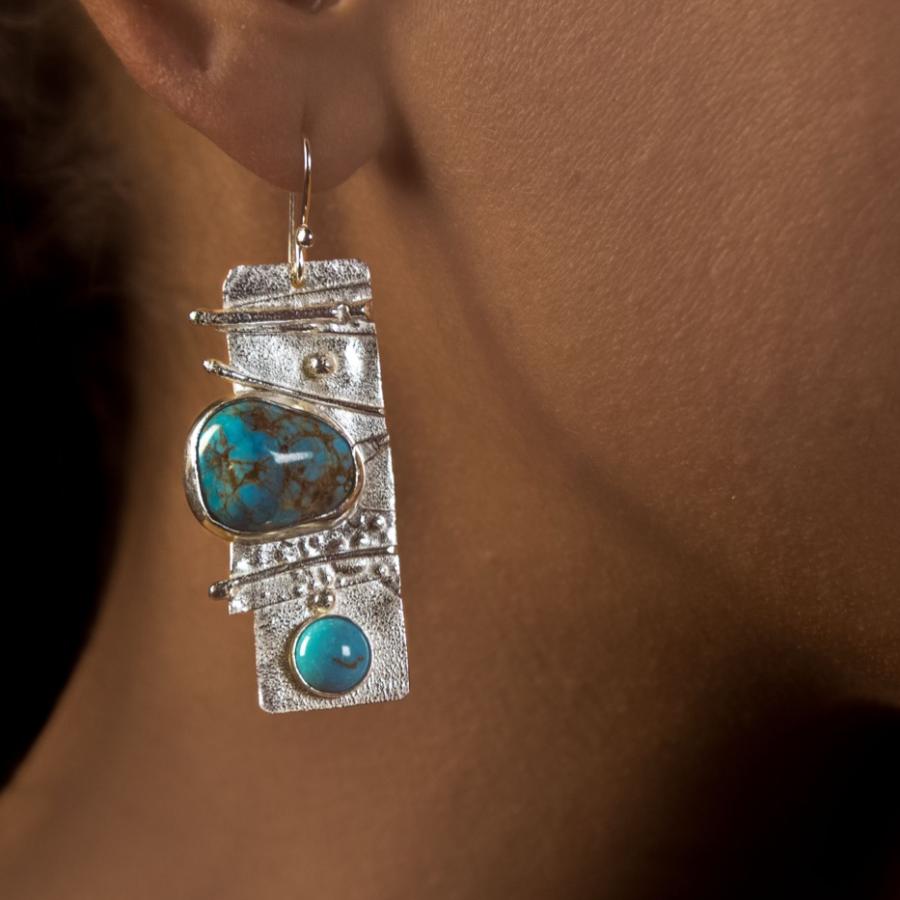Its all about asymetry.
About the stones
Turquoise from New Mexico
Turquoise
The substance has been known by many names, but the word turquoise dates to the 17th century and is derived from the French turquois for "Turkish" because the mineral was first brought to Europe from Turkey, from mines in the historical Khorasan Province of Persia. Pliny the Elder referred to the mineral as callais and the Aztecs knew it as chalchihuitl.
The pastel shades of turquoise have endeared it to many great cultures of antiquity: it has adorned the rulers of Ancient Egypt, the Aztecs, Persia, Mesopotamia, the Indus Valley, and to some extent in ancient China since at least the Shang Dynasty. Despite being one of the oldest gems, turquoise did not become important as an ornamental stone in the West until the 14th century.

